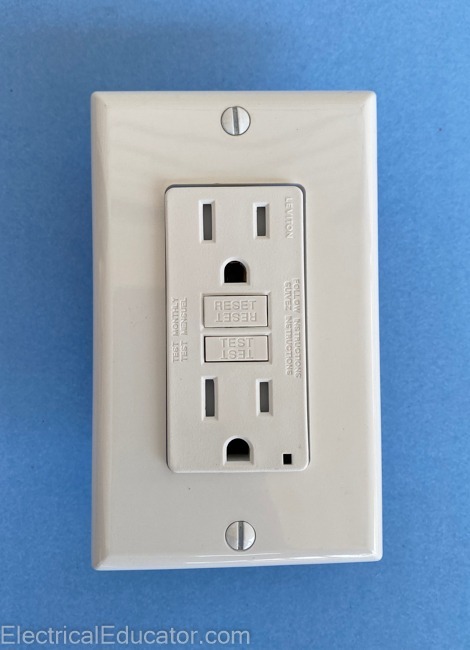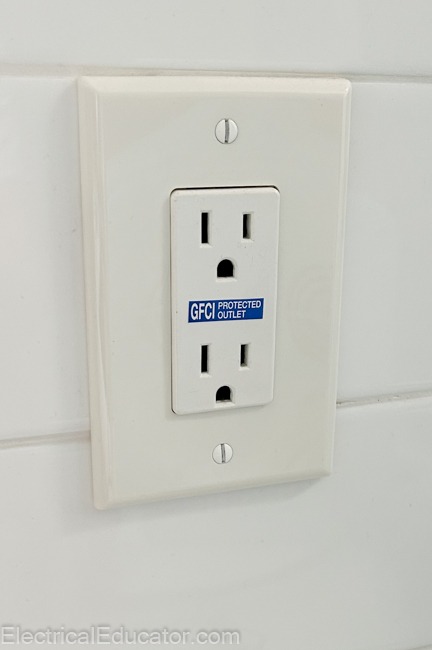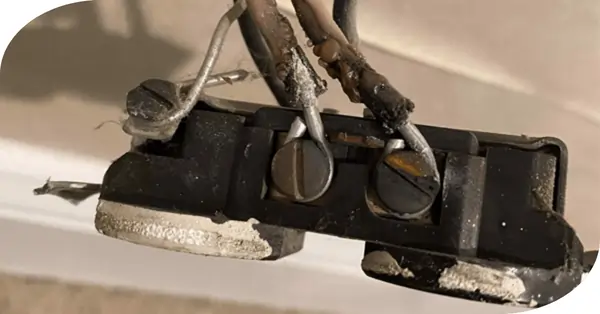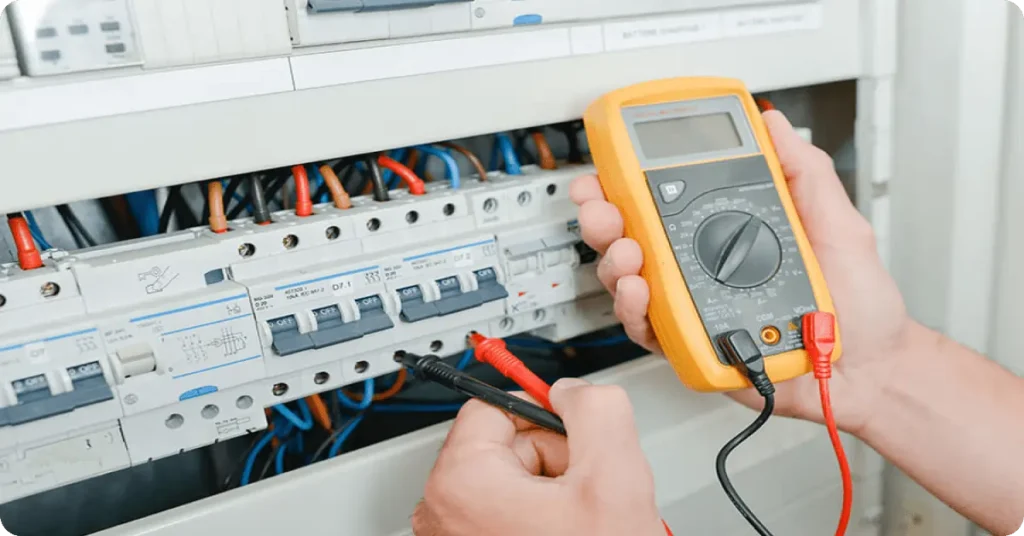Ground fault circuit interrupters are required devices as per the National Electrical Code. They’re intended to protect us from electric shock and have saved countless lives to date. But just where are they supposed to go?
GFCI Protection
GFCI protection is a life saving technology required in many parts of the home as per the National Electric Code. Many times, GFCI protection comes in the form of a GFCI receptacle (you know, those receptacles with the two buttons on them). It can also come in the form of a GFCI breaker that would effectively protect the entire circuit. There are other forms but they’re outside the scope of what you need to know here. In this article I’d like to specifically discuss necessary GFCI locations. If you want to learn more about GFCI protection in general, take a look at GFCI Protection Explained.

GFCI Required Locations:
As per the National Electric Code, a GFCI is required to protect “All 125-volt, single-phase, 15 and 20-ampere receptacles” installed in the following locations in a home. We’re in article 210 in the NEC for anyone interested. Free NEC PDF Here (click “Free Version”). Here’s your short list of GFCI Locations:
- Bathrooms
- Garages and accessory buildings with a floor at or below grade level and not intended as a habitable room such as work areas, storage areas, and similar areas
- Outdoors (210.8 (F))
- Crawl Spaces at or below grade level
- Unfinished basements.
- Kitchen receptacles, ALL kitchen receptacles, not just kitchen countertops. This is where GFCI breakers come in to play.
- Areas with sinks and provisions for food prep
- Sinks (where the receptacles are located within 6 feet of the outside edge)
- Boathouses
- Receptacles installed within 6 feet of the outside edge of a bathtub or shower stall
- Laundry areas
- Dishwashers
- Boat Hoists (even if they are 240V)
- Indoor Damp Locations & Wet locations
- Any device, fixture, or electrical equipment that requires it per the manufacturer
GFCI Receptacle Locations Explained
The lists above seem very straight forward but I’ll clarify some of the items that may be tricky. Firstly, all means all. If there is a receptacle in any of the locations on the above list, it MUST have GFCI protection.
Kitchens seem to confuse many homeowners and enough electrical contractors. ALL receptacle outlets need GFCI protection. That means the dishwasher and the refrigerator as well. This is where one would use a GFCI breaker in the electrical panel so that the appliance need not be moved in case the device trips.
Outdoors in 210.8F is a relatively new requirement. This does not just pertain to outdoor receptacles any longer. Every exterior outlet (in NEC speak that’s pretty much anywhere wiring terminates outdoors) now needs GFCI protection. Yes, that includes heat pumps for pools as well as mini split air conditioning units although at the time of writing there is an exception floating around because of consistent nuisance tripping air conditioning units.
Pools
But wait, there’s more! I’m only going to include GFCI locations pertaining to homes in this article so we’ll talk about only 1 more section. Pools. Pools are mostly outside so 210.8 (F) would cover that. Sometimes pools are inside as well, these GFCI locations apply to all pools:
- General use receptacles (between 6-20 feet from inside wall of pool)
- Circulation system receptacles (for pool pumps)
- Any receptacle (120-250V, up to 60A) within 20 feet of the inside wall of the pool
- Underwater Luminaires (read 680.23 for more details)
- Gas Fired Water Heaters (since the 2017 Code)
- Electric Pool Covers
- Any Exterior Outlet (2020 update, 210.8(F))
- Anything required by the manufacturer
No GFCI Present
One more nuance worth explaining here has to do with the various types of GFCI devices available. A standard electrical receptacle may not be a GFCI but still have GFCI protection. This can be accomplished in one of two ways. Firstly, it can be wired to the load side of a GFCI receptacle. Anything on the load side, such as downstream outlets, are protected by the GFCI. Secondly, a circuit breaker type GFCI may be protecting the entire branch circuit. These exist for dedicated branch circuits such as pool pumps as well as general use circuits. Today many electricians will do this for kitchen and bathroom receptacles.

Conclusion
As always, please consult a local licensed electrician to assess your situation. Remember, older homes will not have GFCI protection in all (or any) of the required locations today. It’s a very good idea to have a GFCI device or devices installed in all of the above locations. They are typically not expensive and very reliable today. If you’re a new homeowner or just looking for a licensed local electrician that we can recommend head over to our National Electrical Registry.
Thanks for reading
Look for a receptacle with test and reset button on it. If there are non present there may be protection by a GFCI breaker or from an upstream GFCI receptacle. Otherwise you may not have GFCI protection.
They should be in the above locations: kitchens, bathrooms, outdoors, basements, etc. They can also be located in the electrical panel if you have a GFCI breaker.
Any receptacle in a garage should be GFCI protected. Look for GFCI receptacles themselves (look for a test and reset button), also look for another GFCI receptacle that may be protecting it. Sometimes these are in other parts of the house. Lastly, you may have a GFCI breaker in the panel to protect garage receptacles.



Pingback: Why are Some Electrical Outlets Installed Upside Down? -
Pingback: GFCI Protection -